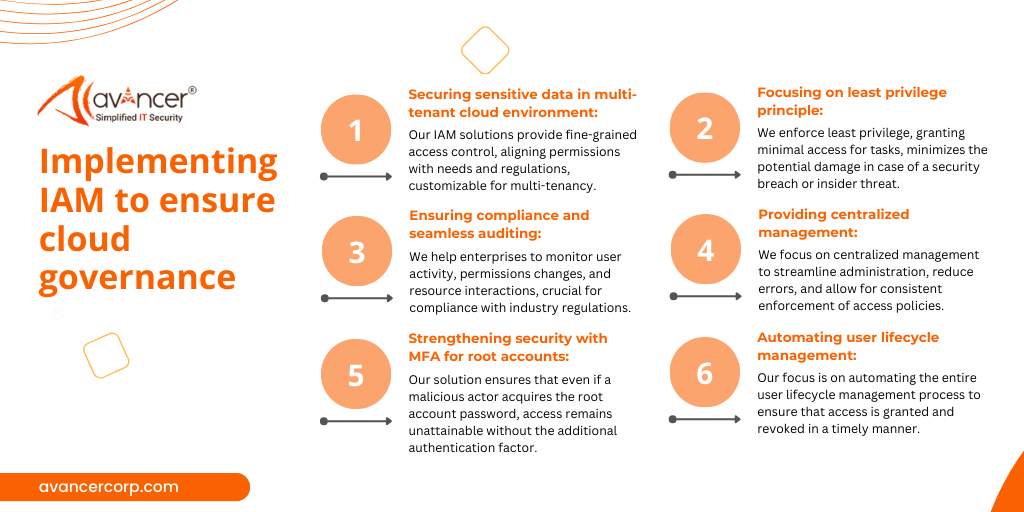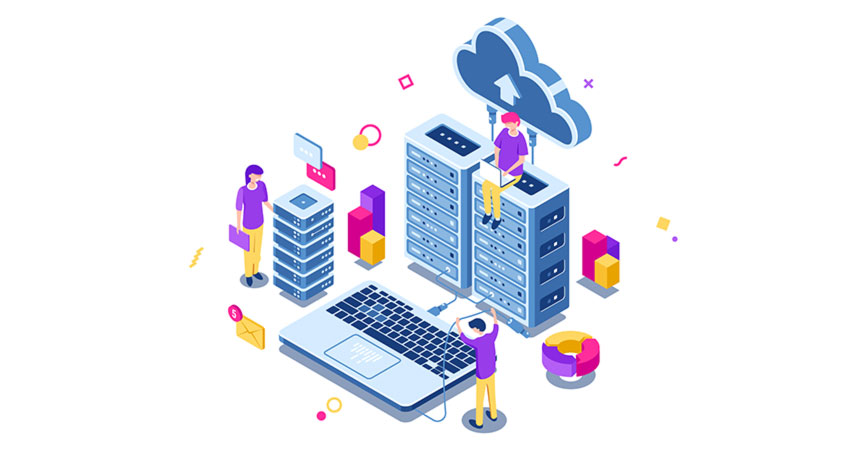According to Gartner, global expenditure by end-users on public cloud services is expected to increase by 21.7 per cent, reaching a total of USD 597.3 billion in 2023, compared to the USD 491 billion recorded in 2022 . Further, Gartner indicates that 75 per cent of organizations by 2026 will embrace a digital transformation approach based on cloud as its core foundational platform. Such trends will further drive the growth in the Cloud Management and Security Services segment, reaching USD 42.4 billion in 2023, up from USD 34.4 billion in 2022.
As indicated by the above figures, with organizations increasingly adopting cloud computing, the complexity of managing user access to various services, applications, and data also increases, necessitating the implementation of a robust IAM solution. IAM not only fortifies the cloud environment against unauthorized access but also empowers organizations to implement complex access scenarios through granular control. IAM also helps to prevent unauthorized access, data breaches, and other security incidents, along with ensuring compliance with security policies and regulations.

Here’s how we at Avancer implement IAM to ensure cloud governance:
Securing sensitive data in multi-tenant cloud environment:
With the convenience of the cloud also comes the responsibility of securing sensitive data, particularly in multi-tenant environments where multiple organizations share the same infrastructure. This is where our IAM solutions steps in, providing a robust solution for securing sensitive data. As IAM allows organizations to define fine-grained access controls, we help organizations in specifying which users or groups can access specific resources, services, or data sets. This level of granularity ensures that access permissions are aligned with business needs and regulatory requirements. For instance, the finance team can access financial data storage but cannot modify it, while the System Administrators have complete access. Further, in a multi-tenant cloud environment, it’s often essential to assign various licenses and access to various assets based on the type of work different users or organizations need to perform. Through our IAM solution, we facilitate this customization by allowing cloud administrators to define access permissions, not just at the data level, but also at the application and service level. This ensures that data remains secure within each tenant’s environment, even in a shared infrastructure.
Focusing on least privilege principle:
We focus on enforcing the principle of least privilege, which means users are granted the minimum level of access necessary to perform their tasks. This minimizes the potential damage in case of a security breach or insider threat. Users are only granted access to the resources and actions that are directly relevant to their roles and responsibilities.
Ensuring compliance and seamless auditing:
There are various IAM tools for auditing and tracking access to cloud resources. We help enterprises to monitor user activity, permissions changes, and resource interactions. This is crucial for compliance with industry regulations and standards such as GDPR, HIPAA, and PCI DSS, as organizations need to demonstrate that access to sensitive data is controlled and audited. For instance, healthcare organizations dealing with sensitive patient data must adhere to strict regulatory requirements, such as HIPAA. IAM plays a pivotal role here by enabling role-based policies that guarantee only authorized personnel can access patient records.
Providing centralized management:
IAM centralizes the management of user identities and access permissions. This is especially important in cloud environments where resources may be spread across multiple services and platforms. We focus on centralized management to streamline administration, reduce errors, and allow for consistent enforcement of access policies.
Strengthening security with MFA for root accounts:
Within IAM, Multi-Factor Authentication (MFA) functions as a pivotal defense against unauthorized access, data breaches and compliance violations. It’s not just an option but an essential component of cloud security that organizations should fully adopt and integrate, especially for the root account, which in cloud environments has the highest level of access and control over the entire infrastructure. Our solution ensures that even if a malicious actor acquires the root account password, access remains unattainable without the additional authentication factor.
Automating user lifecycle management:
IAM systems facilitate the entire user lifecycle management process. This includes onboarding new users, managing user roles and permissions, and offboarding users who no longer need access. Our focus is on automating these processes ensures that access is granted and revoked in a timely manner, reducing the risk of lingering access after an employee leaves the organization.
Designing scalable and flexible solutions:
Cloud environments are dynamic and can scale rapidly. Our IAM solutions are designed to accommodate this scalability while maintaining security. As organizations expand their cloud presence, our IAM solutions can handle the increasing complexity of managing user identities and access.
Implementing robust API access management:
As modern applications become more decentralized and rely heavily on microservices, the importance of robust API access management cannot be overstated. IAM stands as a robust solution that empowers organizations to maintain security, regulate access, and ensure compliance within their microservices architecture. By generating API tokens, assigning granular permissions, employing RBAC, enabling revocation and expiry, and offering centralized management, IAM effectively navigates the complexities of microservices-based application security.
IAM empowers organizations to enforce granular access controls, secure critical applications, maintain compliance, automate user management, and enable secure API interactions. In the intricate web of cloud computing, IAM is the tool that brings order and security to user access, ensuring that the cloud’s potential is harnessed without compromising on safety.

